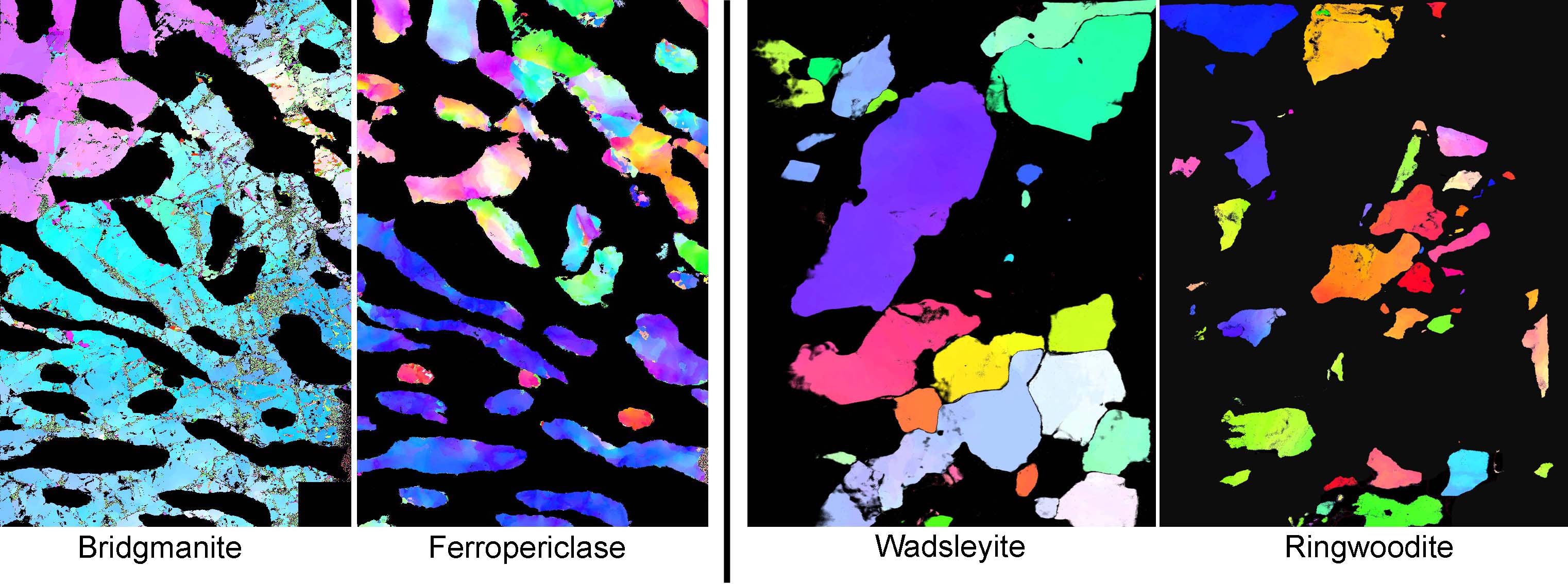RheoMan: a five-year, ERC-funded (Advanced Grant), project to model the rheology of the Earth's mantle
Apr 21, 2018 Orientation mapping in the TEM to study deformation Results
In two papers just published, Billy Nzogang shows how orientation maps obtained with the ASTAR system can provide a new approach to study plastic deformation in high-pressure phases
These two papers are correspond to two collaborations.
The one in G-Cubed corresponds to a collaboration with SI Karato and J Girard in Yale. We show that mapping orientations and deriving misorientations at the scale of the TE brings information about an aggregate of bridgmanite and ferropericlase deformed in the conditions of the uppermost lower mantle. We show that in bridgmanite plastic strain localizes on amorphous lamellae whereas ferropericlase deforms very much by dislocation activity. Despite very high strains, no evidence for recovery or recrystallization is observed.
In the paper published in Minerals we present the results of a collaboration with T Kawazoe (Univ Hiroshima) and N. Miyajima (Univ Bayreuth) on a aggregate of wadsleyite and ringwoodite. Both phases exhibit comparable microstructures. The only difference lies in the much easier ability of wadsleyite to develop recovery by grain boundary migration.
The papers:
- B. Nzogang, S. Thilliez, A. Mussi, T. Kawazoe, N. Miyajima, J. Bouquerel & P. Cordier (2018) Application of Scanning Precession Electron Diffraction in the Transmission Electron Microscope to the characterization of deformation in wadsleyite and ringwoodite. Minerals, 8, 153; doi:10.3390/min8040153
- B. Nzogang, J. Bouquerel, P. Cordier, A. Mussi, J. Girard & S-I Karato (2018) Characterization of bridgmanite and ferropericlase aggregates deformed at HP-HT by Scanning Precession Electron Diffraction. Geochemistry, Geophysics, Geosystems, 19, 582-594. https://doi.org/10.1002/2017GC007244


